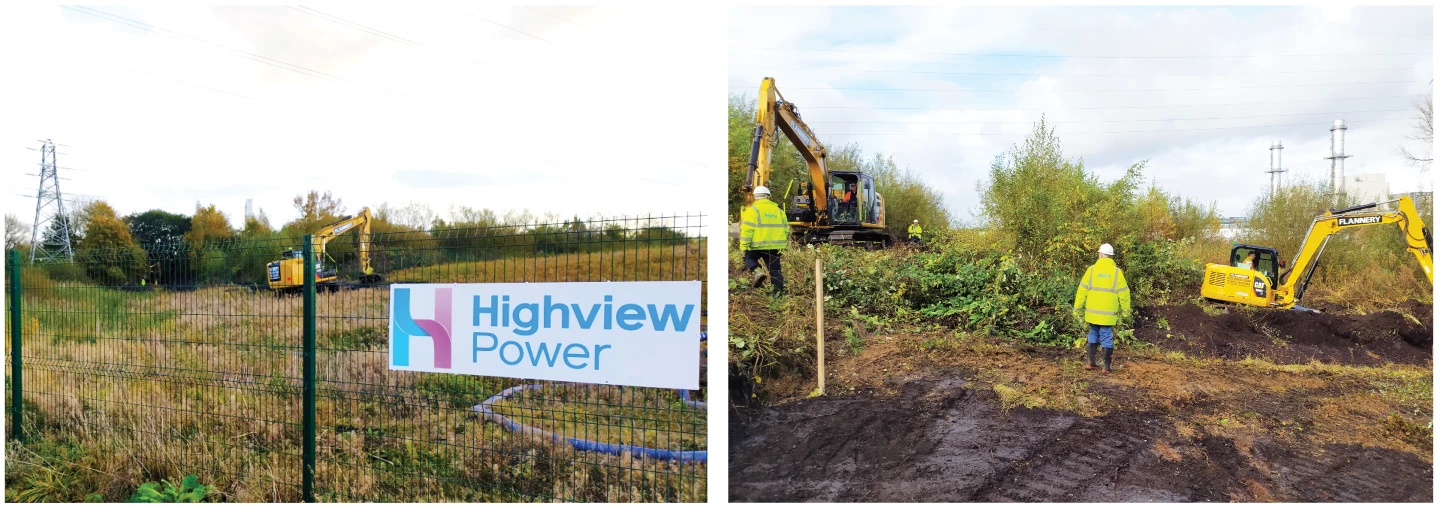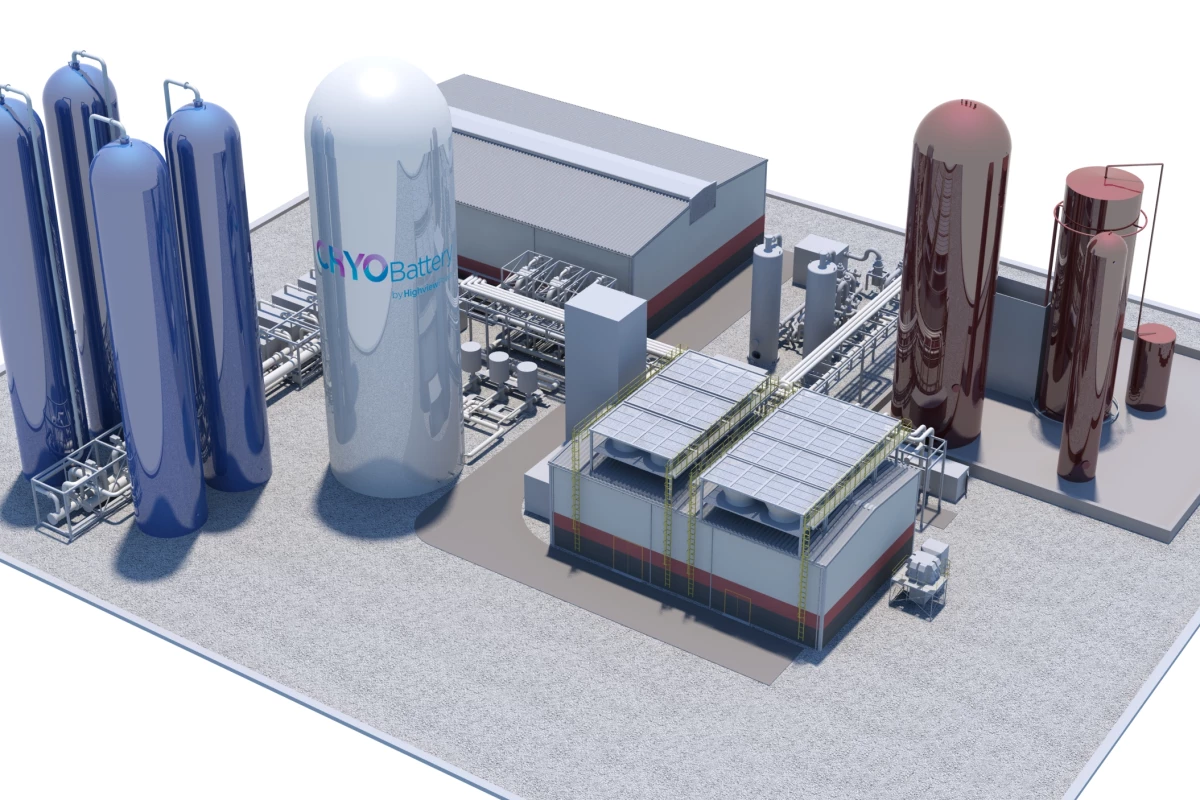The wheels are beginning to turn on an innovative new energy project in the UK that is set to become one of Europe’s largest energy storage systems. The 250-MWh CRYOBattery uses a cryogenic cooling technology to turn ambient air into liquid, which can then be used to store and release energy over long periods of time.
The CRYOBattery is to be built just outside the city of Manchester and will make use of cryogenic energy storage technology developed by co-operator Highview Power. This technology is driven by a process called air liquefaction, where ambient air is drawn in, compressed and then cooled to reach temperatures of -196 °C (-320 °F).
At this point, the ambient air becomes liquid and can be stored with high efficiency in low-pressure insulated tanks. When energy is needed, the liquid air can be heated up and rapidly expanded into a gas, with this swift increase in volume harnessed to drive a turbine and generate electricity. The advantages of this approach are the scalability and that it offers longer-term energy storage than traditional batteries, which could see it play an important role in integrating renewables into the grid.
Highview Power has previously built two demonstrator plants in the UK, but the new 50-MW/250-MWh project in Carrington Village just eight miles (13 km) outside Manchester will be its biggest effort so far, and one of Europe’s largest energy storage systems. It received a £10 million (US$13.2 million) government grant to build the facility, which will include an adjacent visitor center.

Construction is now underway on the project, with the visitor center expected to open in the first quarter of next year so folks can check in on the progress. The CRYOBattery is slated to enter commercial operation in 2023, with the facility expected to store enough power to run around 50,000 homes for five hours, according to the BBC.
“Our facility will deliver much needed clean, reliable and cost-efficient long duration energy storage to the National Grid,” says Javier Cavada, Highview Power CEO and President. “The CRYOBattery will help the UK to integrate renewable energy and stabilize the regional electrical grid to ensure future energy security during blackouts and other disruptions.”
Source: Highview Power





